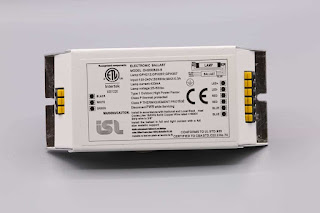Consider these criteria before selecting a suitable UVC ballast.
To select the right UVC ballast, you will first need to identify the lamp that you will be using. Many wrongly assume the selection process to be as simple as pairing a fluorescent lamp with a fluorescent ballast. Specialized ballasts must be chosen for use in amalgam and mercury based lamps. Similarly, there is quite a difference between a low pressure UV bulb used to harden epoxy resins, for example, and a high pressure UV germicidal bulb used for disinfection.
The output requirement of an ultraviolet lamp must be met by the ballast itself. Appropriate matching of lamp and ballast enables illumination from the moment of the initial sparking voltage, to its continual operation.
Choosing one UVC ballast to operate multiple germicidal bulbs may not be the most efficient practice, however, if the right ballast and bulbs are utilized, this may be possible.
AC or DC?
Electronic ballasts are available in a variety of input voltages, which means there’s a high chance you can match the voltage required with any already existing ballast. If you have a battery operated device then a 12V DC or 24V DC ballast might be a suitable option.
Duty cycle
To select the right ballast, you may need to define the on-off cycle of the lamp that you will be using. This is because there are several start types offered on the market. Some start a lamp instantly but shorten lamp life, others start slower but dramatically increase the life of the lamp. Using an inappropriate ballast starter could cause the UV-C lamp to fail sooner than anticipated.
One final tip would be to select the best manufacturer / supplier for high quality UV-C ballasts. ISL Products has been designing UV-C ballasts for germicidal lamps for over fifteen years, and they have delivered innovative technology to virtually every industry. ISL have provided customized solutions for applications including independent residential UVC units, to water purification systems that deliver purified water in developing nations.
ISL’s team of qualified industry experts are always ready to offer advice and assistance and to help organizations select the perfect components for their application. For the highest quality UV-C ballasts on the market today, contact ISL Products.
- https://backlinkssiteslist.com/page/business-services/the-working-principles-and-components-of-brushed-dc-motors
- https://besthealthcaretips.net/page/business-services/the-working-principles-and-components-of-brushed-dc-motors
- https://diigo.com/0uoa4c
- https://www.pearltrees.com/islproductsny2/item561975754
- https://bikre.com/the-working-principles-and-components-of-brushed-dc-motors/
- https://www.hitech-services.xyz/page/other/the-working-principles-and-components-of-brushed-dc-motors
- https://acertdglobalplatform.mn.co/posts/46989601
- https://pepins.mn.co/posts/46989604
- https://beyondher.mn.co/posts/46989855
- https://followingbook.com/post/126706_the-working-principles-and-components-of-brushed-dc-motors-delve-into-the-intric.html
.jpg)


Comments
Post a Comment